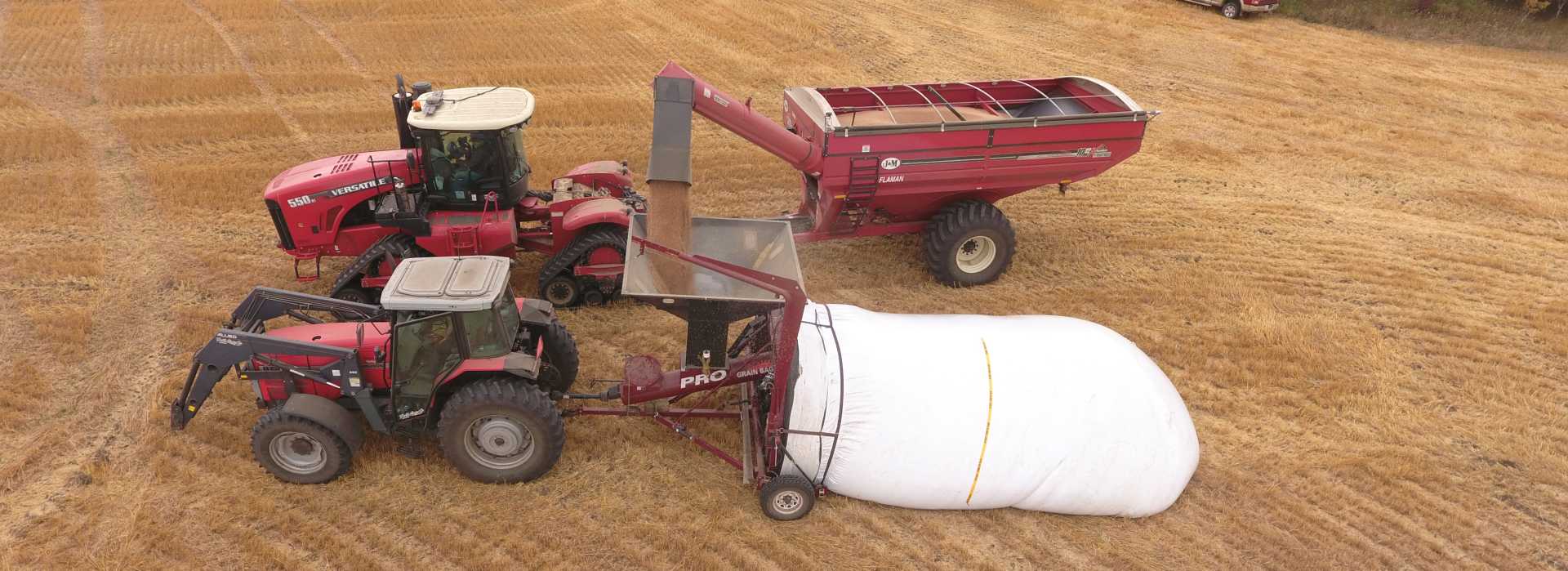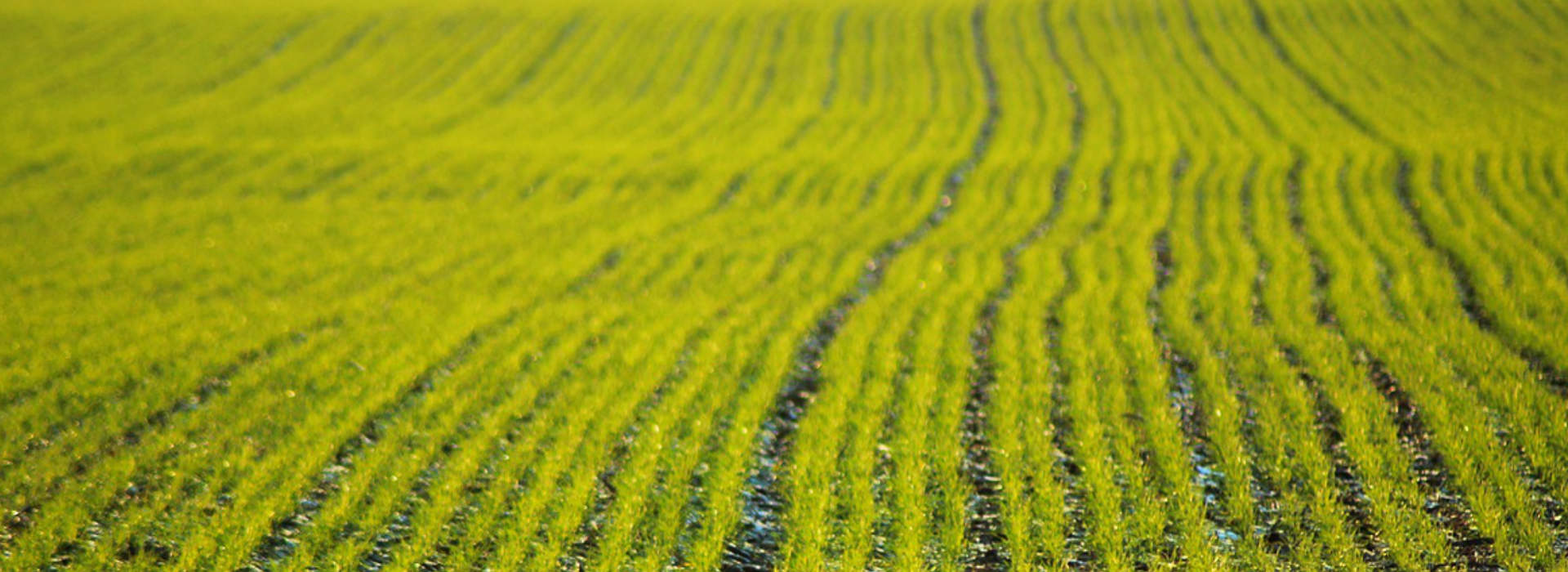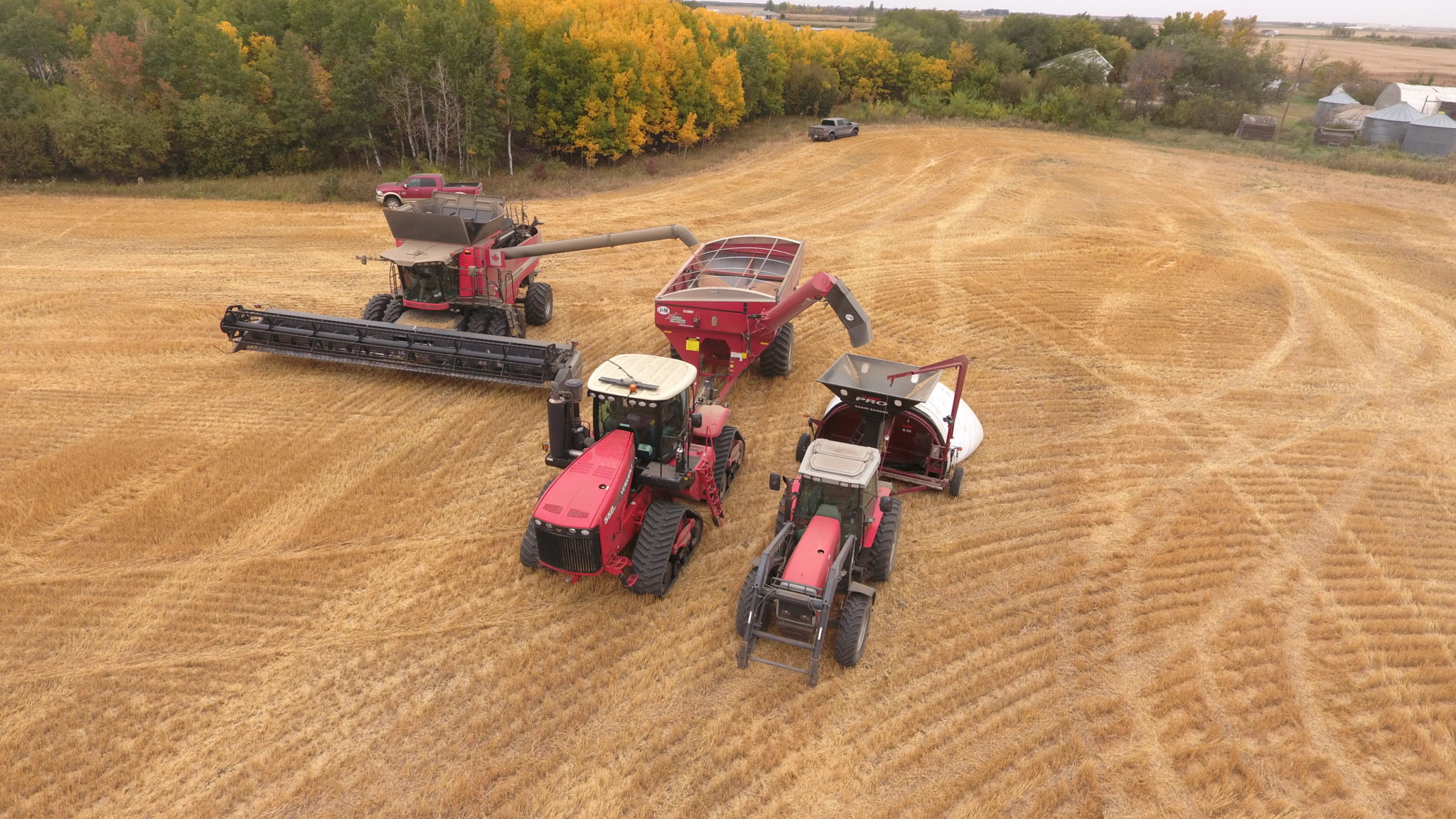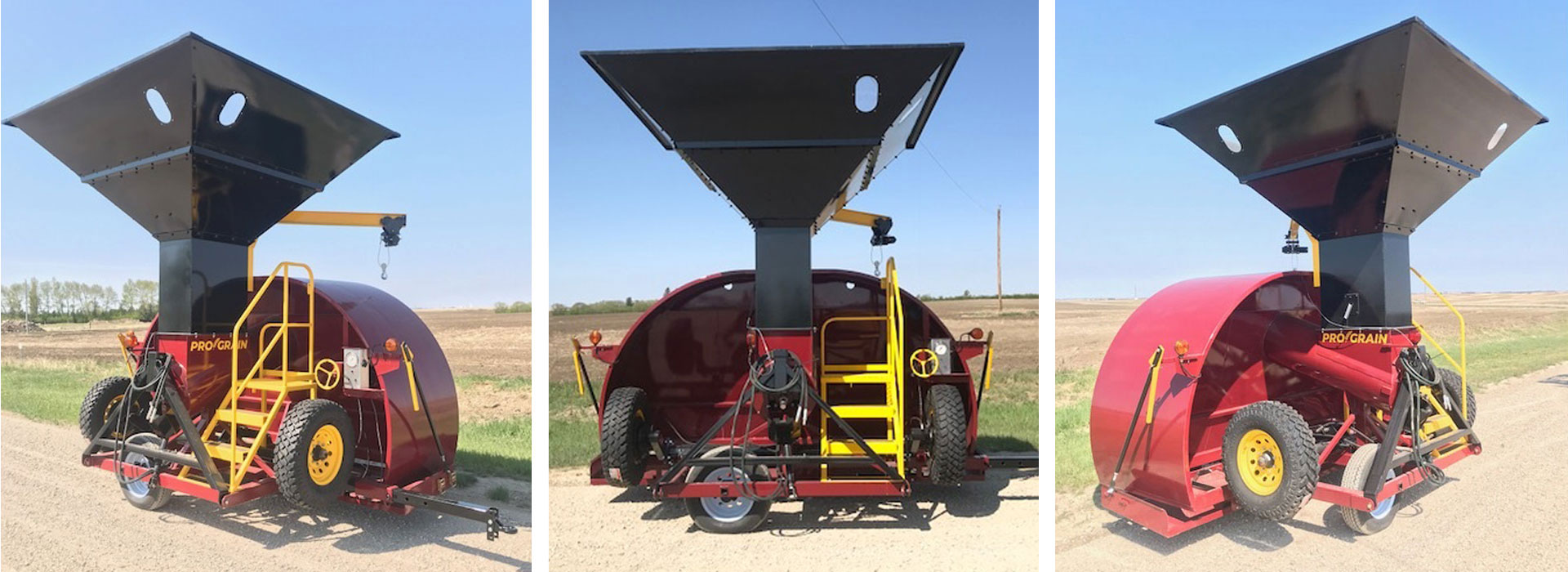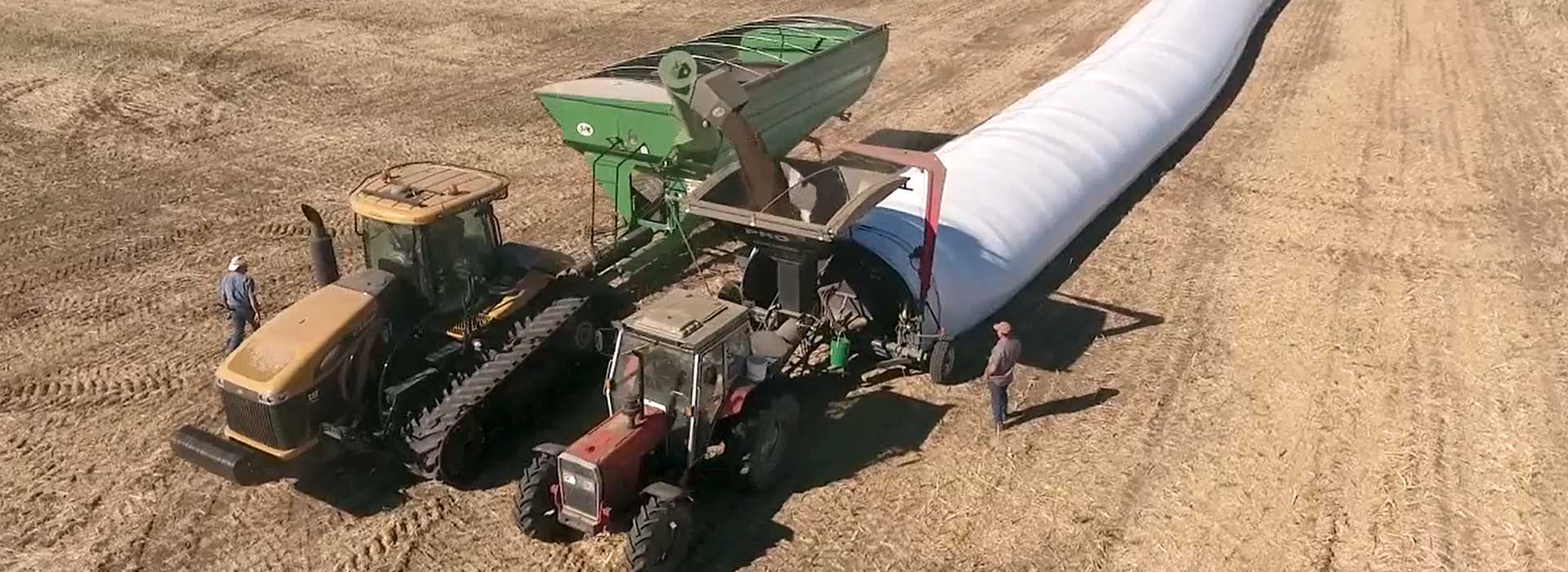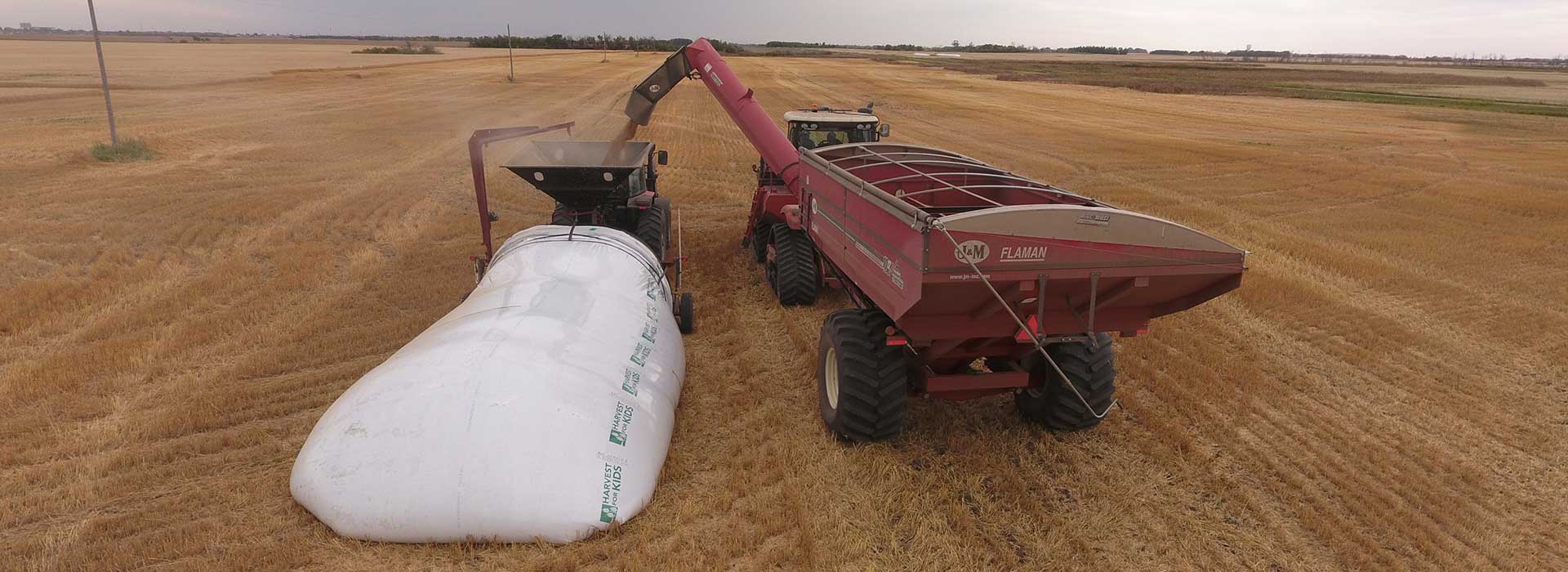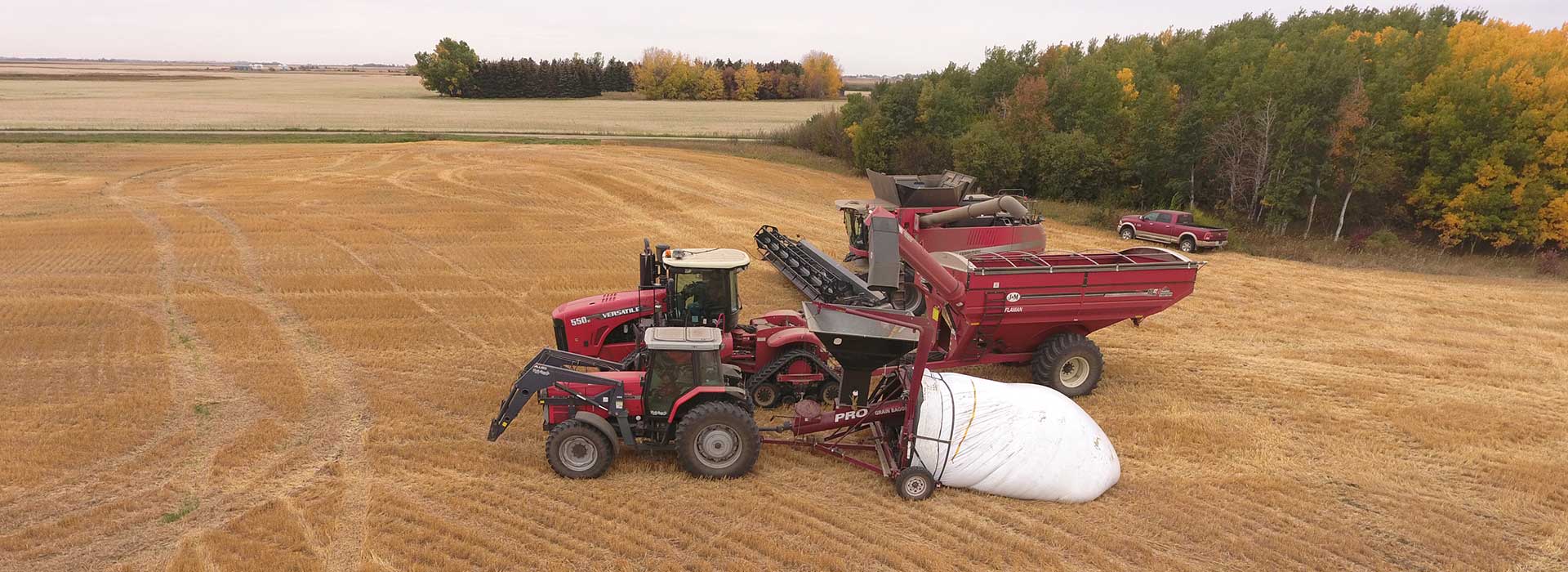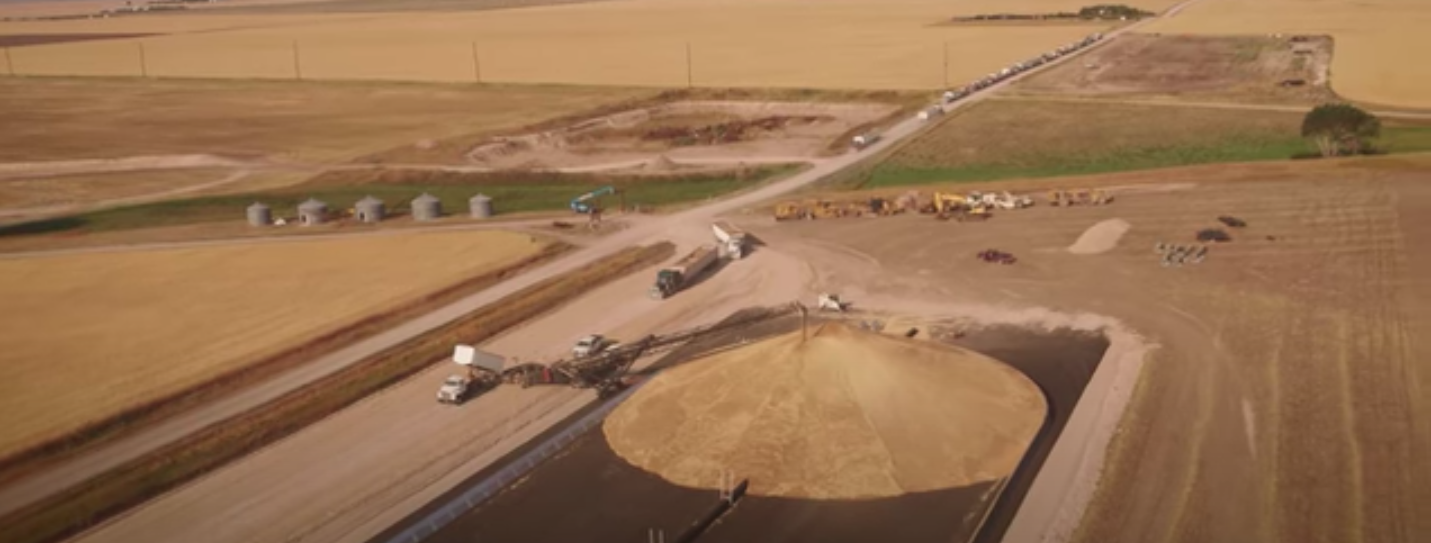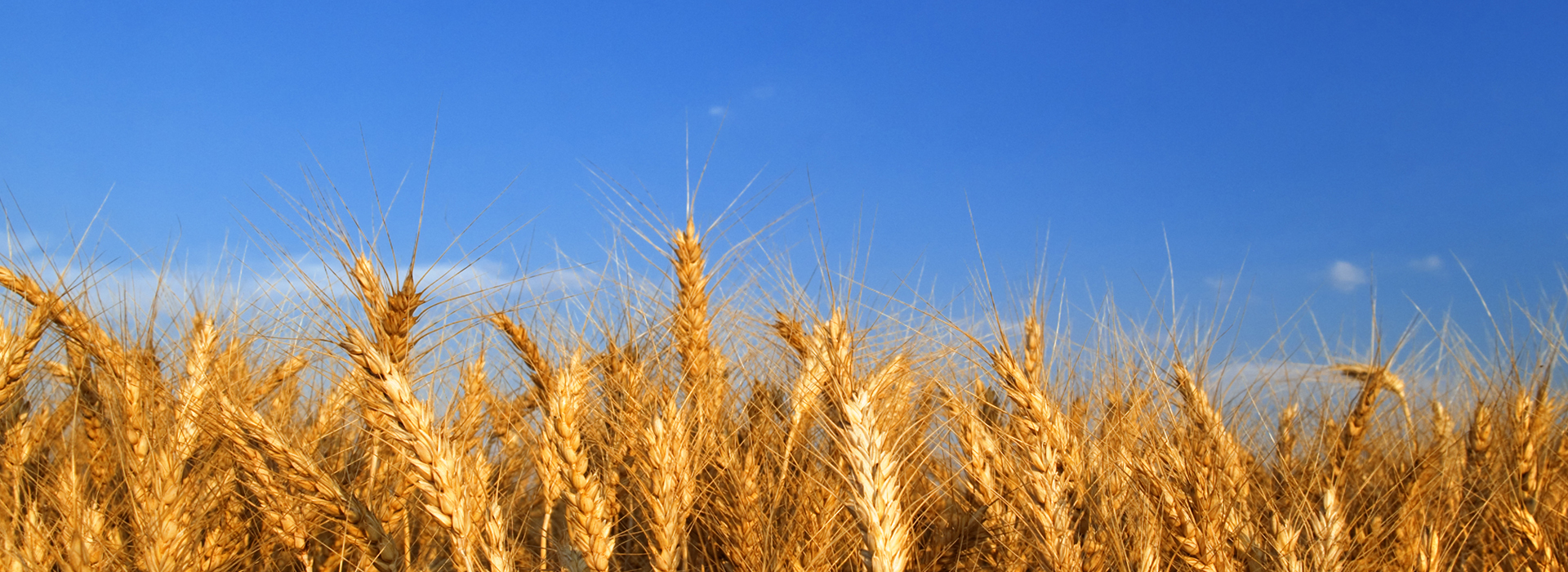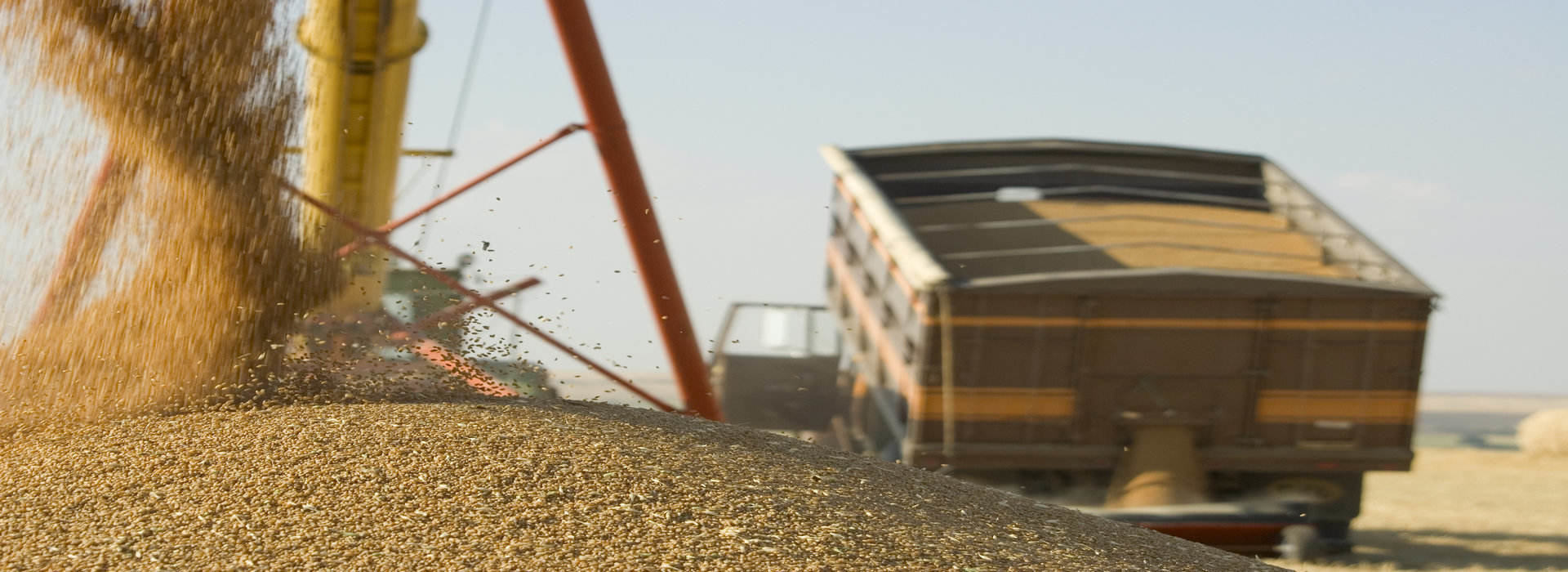
Long and Short-term Grain Storage Solutions: Pros and Cons
Article published on: Jun 10
There are a variety of options available for grain storage today. Some are seasonal while others offer long term protection against environmental spoilers like mould, fungus and leakage. The decision to select the best one for your operation might lead to feelings of uncertainty in how to proceed, especially when comparing traditional methods to newer options like grain bagging.
In deciding which option is best suited to your operation and in keeping the grain dry and cool, there are some factors to consider: managing the grain while stored, costs associated and expected return from storage method, commodity prices, harvest logistics, harvest weather, and your production needs. Between storing the harvested product in permanent structures for peace of mind or in short-term options for harvest flexibility, each selection comes with pros and cons.
Storing in Permanent Structures
A traditional method of grain storage. They are a permanent structure, offering controlled protection for temperature and moisture control through aeration. At a quick glance, these offer the potential for resale value and peace of mind that the harvest is kept safe from damage or spoiling. The drawbacks are the high upfront costs to build, the ongoing maintenance required, and the high costs of transportation depending on the distance from the harvest site.
Silos
The pros: The significant heights of these structures allow more grain to be stored while taking up less land. There is greater user control when having your product in one location. Once the tightly sealed unit with aeration is built in place, there’s little more to do other than keeping to a stringent maintenance schedule. Lasting several decades or more with proper maintenance, Silos allow for efficient and cost-effective collecting and transport compared to other options, reducing labour and owner costs.
The cons: Permanent structures have higher upfront price tags and require specialized engineers, making the initial investment significantly higher than other options. This cost can be economically offset when used to store grain long term, by the building’s ability to store and deliver larger quantities of product. Silos are not ideal for short term storage as the product needs to be moved in less than 3 months, and if you are new to the industry, it is not an appropriate choice. Safety risks and precautions are also a consideration, as the extreme height makes inspecting the unit risky, requiring certain Worksafe requirements to be met.
Metal Bins
The pros: Resale value can be good depending on the ease of portability, such as hopper bottom bins vs flat bottom bins. A variety of sizes and styles of wall construction gives you the flexibility of choice on what you wish to invest in.
The cons: Reusing old bins left unused for years can be done, but crop spoilage can happen if the bins aren’t inspected for tight seals, structural integrity, or properly sanitized to industry specifications. There is a need to closely monitor the stored harvest for quality, as the larger the bin, the higher the chance of the grain spoiling.
Short-term Storage for Harvest Flexibility
These storage options are temporary seasonal solutions. They provide for portable, seasonal and timely availability to the harvest while remaining cost-effective with minimal infrastructure required. The drawbacks are the created waste, risks of grade reduction and risks from pests.
Grain Bagging
The pros: These bags allow you the flexibility to manage challenges such as weather, commodity prices, labour, transportation and bringing your storage right to the harvesting field. By expanding the harvest window, your needs for managing labour constraints and the financial impact of sinking capital into additional transportation and storage if dealing with a high yield crop are reduced. Once sealed, the bags are airtight and the internal environment eliminates the need for preservative chemicals while keeping grain quality. This gives you the ability for commodity market planning and control. In some instances, high moisture grain can be stored with minimal heating, which can be challenging with other temporary solutions. Bagging is a portable choice for rented land and allows you to farm more acres with less manpower. Bagging is a cost-efficient storage option, costing almost half or two-thirds less than traditional methods of grain storage.
The cons: Wildlife can puncture the bags, making protection from insects and mould challenging. Temperature monitoring is needed at several places along the bag unless the bags are stored in a proper area or facility. Potential damage and contamination of mould and insects in the fibrous bag material mean reusing these bags from season to season is not recommended. Bag disposal is a drawback, as each year they need to be disposed of and could have disposal costs attached.
The Ring and Tarp System
The pros: Similar to the bagging system, the ring allows the crop to be stored where it is harvested. This temporary short term solution is helpful if you have other storage methods that are full, and allows you flexibility in marketing your grain. No additional equipment is needed as they are filled and unloaded with what you own, reducing overhead and infrastructure costs compared to other short term storage systems.
The cons: There is a high risk of loss from environmental factors, pests, wildlife and moisture damage. There is also higher maintenance required and the yearly assembly and disassembly operational workload.
Open piles
The pros: There are no forms of infrastructure needing to be built or purchased for this method other than preparing the ground to properly support the harvested crop and to reduce spoilage. Optional considerations depending on the length you wish to store the harvest are covers to protect and shield your grain from the elements and to direct drainage away, and aeration systems added to the piles. This helps protect your harvest for longer than if left to the open elements.
The cons: Environmental factors such as rain or wind can deplete the grade and result in loss of product and financial return and there is no protection from wildlife, insects or fungus. If your site is not well prepared or situated properly, drainage can pose a problem either due to flooding the adjacent land area or with moisture rising from the ground up into the harvest, potentially causing your grain to spoil. Low permeability substances need to be used along with a crown for proper water drainage to prevent your crop from spoiling, and this is a consideration for both the cost to prepare the ground properly and the location if you wish a large area of asphalt, lime or cement to be on your land.


